Introduction
This gear guide summarizes the category of satellite messaging-centric devices, i.e., devices that focus on satellite messaging as its primary, rather than secondary, function. This is in contrast to navigation-centric devices (which usually offer integrated mapping on the device), such as the Garmin inReach Explorer or Garmin GPSMap.
Updates
- November 15, 2024 – added “Performance Tests” section – device and network performance tests for inReach, Zoleo, and iPhone to test device and satellite network performance (Iridium vs. Globalstar).
- September 18, 2024 – added the Garmin inReach Messenger Plus.
- May 24, 2024 – updated specifications to reflect new model availability and product updates; updated some conclusions based on our additional long-term testing and performance comparisons; added four messengers to our “Do Not Buy” list.
Context: types of satellite messengers
1-way vs. 2-way messengers. Satellite messengers are categorized in many different ways. The most common is to characterize them as either 1-way or 2-way messengers. A 1-way messenger can send messages out but cannot receive messages. The SPOT Gen4 is a typical example.
Standalone vs. paired messengers. Standalone messengers provide basic messaging functionality, including the ability to send a preset check-in message or initiate an SOS response. However, pairing the messenger to a smartphone (and the messenger’s companion app) is the only way to access a messenger’s full capabilities. The Garmin inReach Mini 2 is a typical example of a standalone messenger, but pairing it with a smartphone and the Garmin Explore app provides easier access to messaging features and more robust mapping. On the other hand, the Zoleo Satellite Communicator and Somewear Global Hotspot provide minimal functionality as standalone devices and require pairing to their companion apps to use them productively as messaging devices. The Garmin inReach Messenger falls in between these two extremes.
The Garmin inReach Mini 2 offers the most performance (tracking, navigation, and messaging) in the smallest size of any satellite messenger on the market. It's our recommendation when you want to have the insurance of a standalone device if you don't want to use your smartphone or your smartphone fails in the backcountry.
Messaging vs. tracking, mapping, and navigation. All messengers can send messages, but only 2-way messengers can receive them. Some messengers provide the mapping and navigation features of standalone GPS devices or apps. Also, the tracking and location-sharing features available in satellite messengers vary widely.
Photo and Voice Memo Sharing. The Garmin inReach Messenger Plus is currently the only device capable of transmitting photos and voice memos via satellite. It uses the Iridium Messaging Transport (IMT) protocol to accomplish this. See our Garmin inReach Messenger Plus review for more information.
The Garmin inReach Messenger Plus is currently the only satellite messaging device on the market that can transmit photos and audio messages (voice memos) via satellite.
- can transmit photos and voice memos
- reverse-charging capability
- integrates with both Garmin Messenger (messaging) and Garmin Explore (navigation) smartphone apps
Comparison: inReach vs. Zoleo vs. SPOT vs. Somewear messengers
The two most popular messaging devices in the Backpacking Light Community other than the Garmin inReach Mini 2 are the Garmin inReach Messenger and the Zoleo Satellite Communicator. Both have their strengths and limitations, and are worth comparing:
|
WEIGHT:
4.0 oz (113 g)
|
WEIGHT:
5.3 oz (150 g)
|
|
Description: Lighter and smaller than a Zoleo and a more pocketable form factor than a inReach Mini 2, the Garmin inReach Messenger boasts a very long battery life, reverse charging, and a display that doesn't require a smartphone for monitoring weather, incoming messages, and more. |
Description: Requires a smartphone to get the most out of it, but arguably offers the best service package of all messengers, including more usable test modes and access to non-emergency medical assistance. Other benefits include an assigned (fixed) messaging number and long-form messages that don't get truncated. |
|
WHAT'S UNIQUE:
|
WHAT'S UNIQUE:
|
|
MAIN ISSUES:
|
MAIN ISSUES:
|
Lighter and smaller than a Zoleo and a more pocketable form factor than a inReach Mini 2, the Garmin inReach Messenger boasts a very long battery life, reverse charging, and a display that doesn't require a smartphone for monitoring weather, incoming messages, and more.
- long battery life
- buttons and mini-display provides access to all functions without a smartphone
- smart watch integration
- mapping/navigation features accessible with a smartphone
- long messages are truncated and split into multiple messages
Requires a smartphone to get the most out of it, but arguably offers the best service package of all messengers, including more usable test modes and access to non-emergency medical assistance. Other benefits include an assigned (fixed) messaging number and long-form messages that don't get truncated.
- a unique SMS number is assigned to the device
- long messages are not truncated and split up
- no-cost professional medical assistance is available for non-emergency situations
- seamless messaging across cellular and satellite networks
- limited access to functions without a smartphone
- somewhat bulkier and heavier
- limited mapping/nav features
The following table compares the Garmin inReach Messenger to the Zoleo Satellite Communicator, SPOT Gen4, SPOT X, ACR Bivy Stick, Garmin inReach Mini 2, Somewear Global Hotspot, and the Motorola Defy. This collection of messengers spans the range of both 1- and 2-way satellite messengers that offer different capabilities with messaging, tracking, mapping, and navigation – and their functionality when paired with a smartphone (or not).
Scroll to the right to view all columns of this table.
| Garmin inReach Mini 2 | Garmin inReach Messenger PLUS | Garmin inReach Messenger | Zoleo Satellite Communicator | SPOT Gen4 | SPOT X | ACR Bivy Stick | Somewear Global Hotspot | Motorola Defy Satellite LInk | |
|---|---|---|---|---|---|---|---|---|---|
| battery life (active tracking at 10-15 minute intervals, 8 hr/day) | 10-14 days | 25 days | 20-30 days | 6-8 days | 20-40 days | 8-15 days | 3-5 days | 7-10 days | 4 days |
| battery type | rechargeable lithium | rechargeable lithium | rechargeable lithium | rechargeable lithium | 4xAAA | rechargeable lithium | rechargeable lithium | rechargeable lithium | rechargeable lithium |
| interface | USB-C | USB-C | USB-C | Micro USB | Micro USB | Micro USB | USB-C | Micro USB | USB-C |
| reverse charging | no | yes | yes | no | no | no | no | no | no |
| text messaging | 2-way | 2-way | 2-way | 2-way | 1-way | 2-way | 2-way | 2-way | 2-way |
| photo messaging | no | yes | no | no | no | no | no | no | no |
| audio messaging | no | yes | no | no | no | no | no | no | no |
| group message conversations | yes | yes | yes | no | no | no | no | no | no |
| send check-in messages from device* | yes | yes | yes | yes | yes | yes | yes | no | yes |
| send custom messages from device* | yes | yes | yes | no | no | yes | no | no | no |
| send custom messages from app* | yes | yes | yes | yes | no | yes | yes | yes | yes |
| activate SOS from device | yes | yes | yes | yes | yes | yes | yes | yes | yes |
| seamless messaging (network-independent)** | yes | yes | yes | yes | n/a | no | yes | yes | yes |
| tracking | yes | yes | yes | limited (Location Share+) | yes | yes | yes | yes | not yet |
| local storage of track data | yes | no | no | no | no | no | no | no | no |
| start/stop from device | yes | yes | yes | yes | yes | yes | yes | no | n/a |
| track retrace | yes (TracBack) | yes (TracBack) | yes (TracBack) | no | no | no | no | no | no |
| satellite network | Iridium | Iridium | Iridium | Iridium | Globalstar | Globalstar | Iridium | Iridium | Inmarsat |
| SOS monitoring | IERCC | IERCC | IERCC | IERCC | IERCC | IERCC | Global Rescue | IERCC | FocusPoint |
| plan costs | $15 - $65 | $15 - $65 | $15 - $65 | $20 - $56 | $12 - $15 | $12 - $30 | $20 - $70 | $8 - $50 | $5 - $30 |
| weather forecasting (integrated)*** | yes | yes | yes | yes | no | no | yes | yes | no |
| view forecast on device*** | yes | yes | yes | no | no | no | no | no | no |
| mapping/navigation on device | yes | yes | yes | no | no | limited | no | no | no |
| mapping/navigation in app | yes | yes | yes | no | limited | limited | limited | limited | no |
| visual display | yes | yes | yes | no | no | yes | no | no | no |
| show incoming messages? | yes | yes | yes | no | no | yes | no | no | no |
| smart watch integration | yes | yes | yes | limited | no | no | no | no | no |
| waterproofing**** | IPX7 | IPX7 | IPX7 | IPX8 | IPX8 | IPX7 | IPX7 | IPX8 | MIL-STD-810H |
| user rating @ REI | 4.2 / 5.0 | n/a | n/a | 4.2 / 5.0 | 2.9 / 5.0 | 3.0 / 5.0 | n/a | n/a | 3.3 / 5.0 |
| companion app | Garmin Explore & Garmin Messenger | Garmin Explore & Garmin Messenger | Garmin Explore & Garmin Messenger | Zoleo | The Spot App | The Spot App, Spot X Bluetooth | Bivy | Somewear | Bullitt Satellite Messenger |
| App Store rating | 3.9 / 5.0 | 3.9 / 5.0 | 3.9 / 5.0 | 4.1 / 5.0 | 2.1 / 5.0 | 3.0 / 5.0 | 3.6 / 5.0 | 4.2 / 5.0 | 2.6 / 5.0 |
| dimensions | 3.9 x 2.0 x 1.0 inches | 3.1 x 2.5 x 0.9 inches | 3.1 x 2.5 x 0.9 inches | 3.6 x 2.6 x 1.1 inches | 3.5 x 2.7 x 0.9 inches | 7.5 x 5.8 x 2.0 inches | 4.5 x 1.9 x 0.8 inches | 3.0 x 3.6 x 0.8 inches | 3.4 x 2.5 x 0.5 inches |
| weight | 3.5 ounces | 4.1 ounces | 4.0 ounces | 5.3 ounces | 5.0 ounces | 7.0 oz | 3.4 ounces | 4.0 ounces | 2.5 ounces |
| msrp | $400 | $500 | $300 | $200 | $150 | $250 | $250 | $280 | $150 |
* For this comparison, we define a “check-in” message as a preset message that can be sent to a group of contacts you specify and a “custom” message that can be specified on the device to say whatever you want it to say (via a physical or online keyboard). Some devices offer the ability to send more than one type of preset message (e.g., the Spot Gen4 calls these two message types check-in and custom messages, but neither are customizable without configuring them via a live internet connection).
** Seamless messaging refers to a device’s ability to maintain message conversations in one place (i.e., inside the device app on your smartphone) across cellular, WiFi, and satellite networks.
*** Some devices (e.g., Garmin inReach Mini 2) offer integrated (built-in) weather forecast requests and display on the device and in-app. Other devices (e.g., Spot X) do not, but third-party services may be used to deliver text-based weather forecasts via satellite messaging features).
**** IPX7 – Can withstand incidental exposure to water up to 1 meter for up to 30 minutes. IPX8 – can withstand continuous immersion of water exceeding 1 meter in depth (devices are usually hermetically sealed).
Performance Tests
Satellite Messenger Performance Test Results
This table shows the average results of 170 message send and receive tests we conducted between a satellite messenger in a remote location ("remote user environment") and a cellular phone user with a 5G signal strength greater than -50 dB (excellent reception). All tests were conducted side-by-side with several satellite messaging devices. The "message send relay time" is the time delay between sending a message from the satellite device to receiving the message on the cellular phone. Updated: November 15, 2024.| Remote User Environment, Test Type | # test locations | inReach Messenger Plus | inReach Mini 2 | Zoleo | Spot X | Apple iPhone 14 |
|---|---|---|---|---|---|---|
| open sky, message send failure rate | 7 | 0% | 0% | 0% | 9% | 4% |
| open sky, message send relay time | 7 | 38 seconds | 37 seconds | 41 seconds | 164 seconds | 141 seconds |
| heavy tree cover, message send failure rate | 4 | 0% | 1% | 1% | 17% | 12% |
| heavy tree cover, message send relay time | 4 | 85 seconds | 94 seconds | 112 seconds | 382 seconds | 294 seconds |
| deep mountain valley, message send failure rate | 6 | 0% | 1% | 4% | 21% | 18% |
| deep mountain valley, message send relay time | 6 | 91 seconds | 73 seconds | 135 seconds | 873 seconds | 649 seconds |
Minor differences were observed between devices on the same network. This is expected since each device attenuates signals differently due to their chipset data processing and antenna technology. Newer devices seem to perform a little better than older devices.
Significant differences were observed between satellite networks.
The Globalstar network provides regional coverage, operating primarily in areas between 70° N and 70° S latitudes (i.e., excluding polar regions). Satellites in the Globalstar network do not have inter-satellite links. Therefore, messages are relayed only when a satellite is in direct line of sight with a ground station. In addition, gaps in coverage may occur in remote areas far from ground stations or under obstructions (e.g., dense forests). When using satellite messaging devices on the Globalstar network in mountainous regions, we’ve commonly experienced message delays of several minutes, with a much higher incidence of delivery failures than Iridium devices. In particular, the small (low power) antenna used in iPhones requires a directional orientation of the phone towards the satellite to maximize data throughput speeds. The iPhone software guides you to turn the phone during this process. Sometimes, as one satellite leaves the sky view and another one enters, this directional change could be dramatic. The process is inconvenient at best, and results in frequent message send failures if you ignore it.
The Iridium network provides global coverage (including the poles), utilizing a low-earth orbit constellation of satellites arranged in overlapping paths. Satellites are cross-linked, allowing for more reliable and faster communication in more remote or obstructed areas (e.g., canyons, forests). When compared side-by-side with Globalstar devices (we used Spot X and Apple iPhone in our tests), Iridium devices (Garmin inReach and Zoleo) were consistently faster and more reliable.
Highlights: Satellite Messengers
-
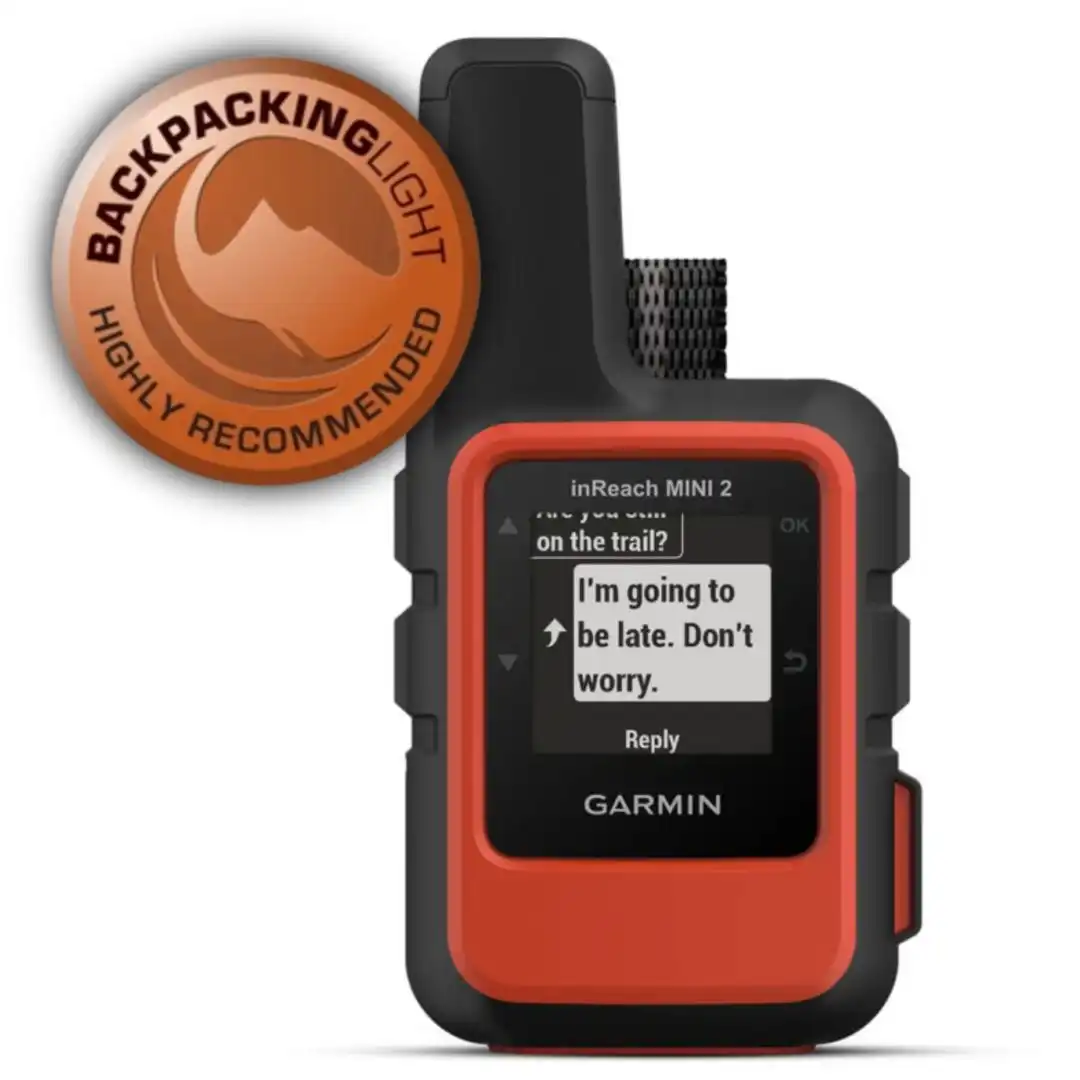 See it at REI See it at Garage Grown Gear
See it at REI See it at Garage Grown GearThe Garmin inReach Mini 2 offers the most performance (tracking, navigation, and messaging) in the smallest size of any satellite messenger on the market. It's our recommendation when you want to have the insurance of a standalone device if you don't want to use your smartphone or your smartphone fails in the backcountry.
-
 See it at REI See it at Garage Grown Gear
See it at REI See it at Garage Grown GearThe Garmin inReach Messenger Plus is currently the only satellite messaging device on the market that can transmit photos and audio messages (voice memos) via satellite.
-
 See it at REI See it at Garage Grown Gear
See it at REI See it at Garage Grown GearLighter and smaller than a Zoleo and a more pocketable form factor than a inReach Mini 2, the Garmin inReach Messenger boasts a very long battery life, reverse charging, and a display that doesn't require a smartphone for monitoring weather, incoming messages, and more.
-
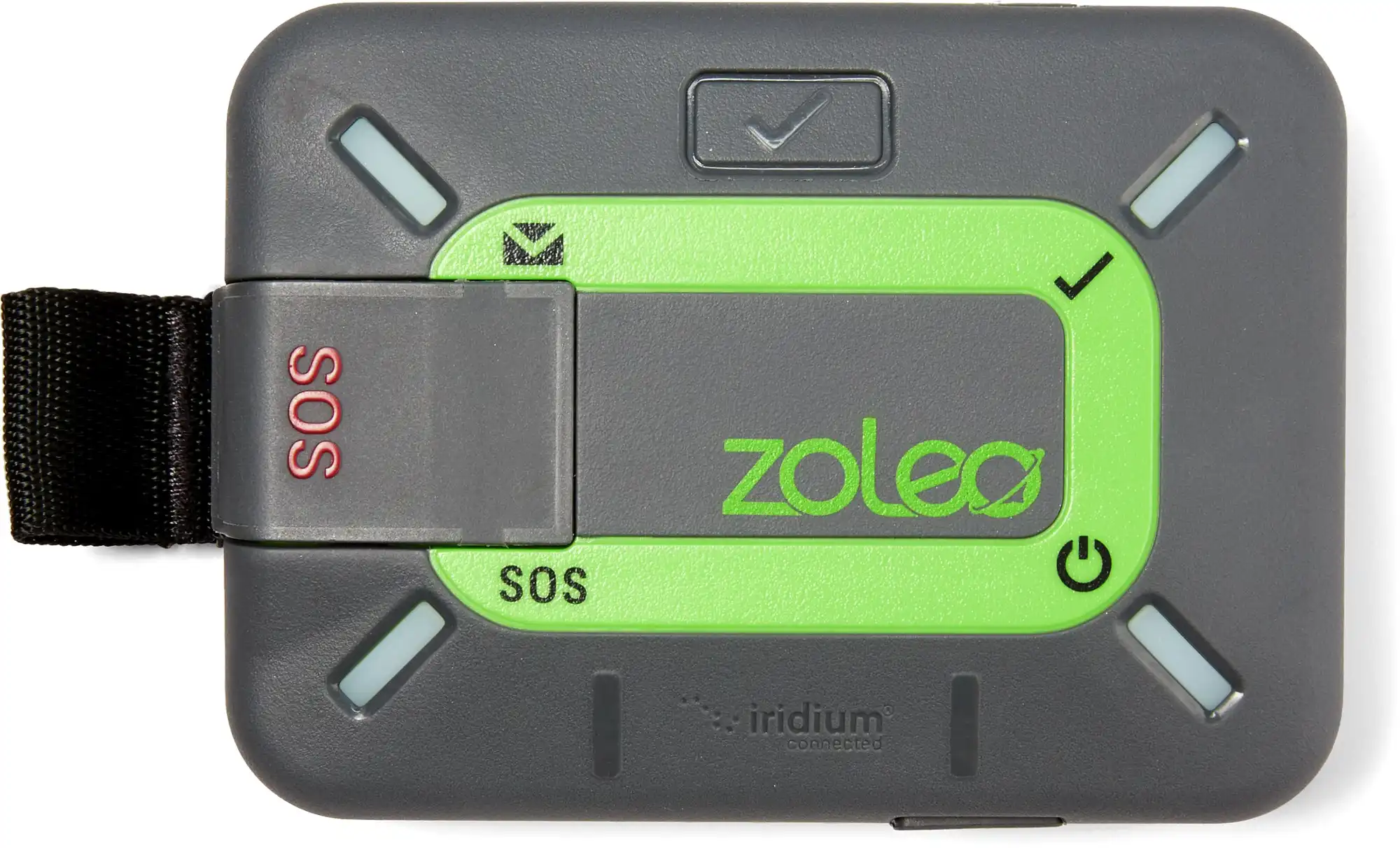 See it at REI See it at Garage Grown Gear
See it at REI See it at Garage Grown GearRequires a smartphone to get the most out of it, but arguably offers the best service package of all messengers, including more usable test modes and access to non-emergency medical assistance. Other benefits include an assigned (fixed) messaging number and long-form messages that don't get truncated.
-
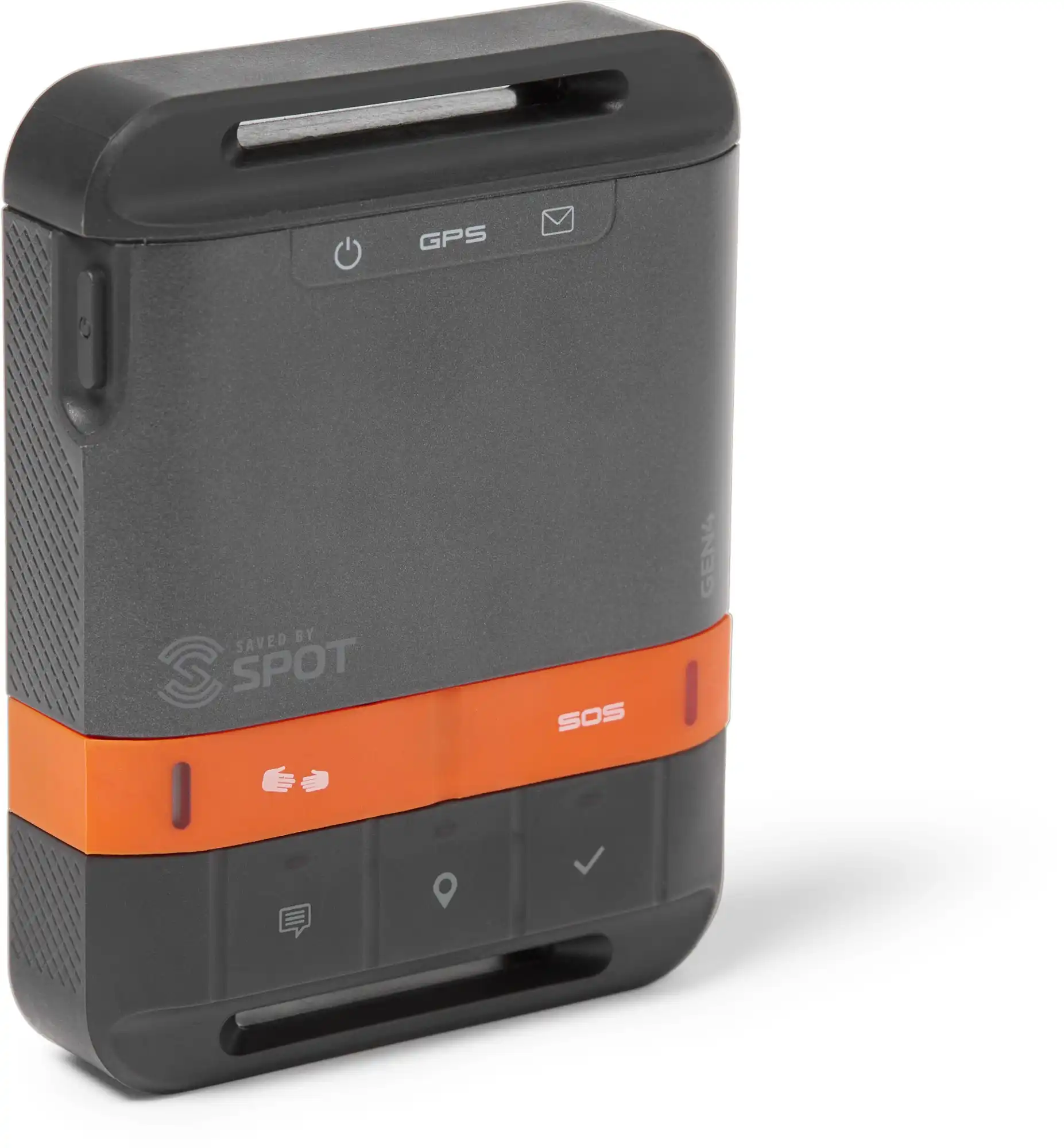 See it at REI See it at SPOT
See it at REI See it at SPOTNot as feature-rich as other messengers, but the Spot Gen4 offers a very long battery life and is the only messenger that uses replaceable/disposable batteries (Lithium AAA).
-
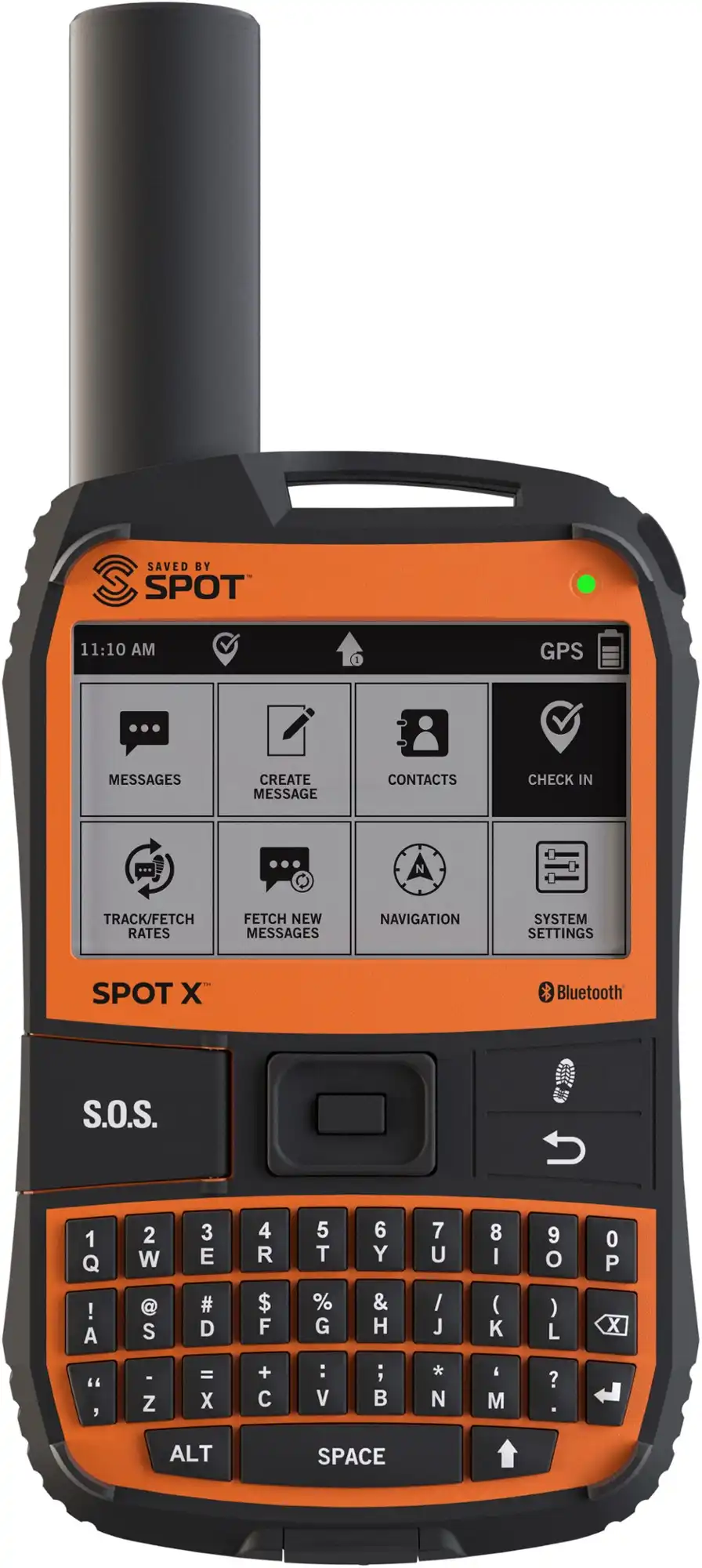 See it at REI See it at SPOT
See it at REI See it at SPOTThe only messenger with a built-in Blackberry-style QWERTY keyboard, the Spot X is one of the few messengers that's (supposed to be) easy to message without a smartphone. However, keyboard response times are slow, and customer support at the parent company is notoriously difficult to work and slow to respond for plan changes, cancellations, or technical support.
-
 See it at ACR
See it at ACRSmall, light, simple, rugged, and durable. Needs a smartphone to access messaging features. A somewhat expensive device for what you get in the context of the rest of the market today, but durability is its strong suit.
-
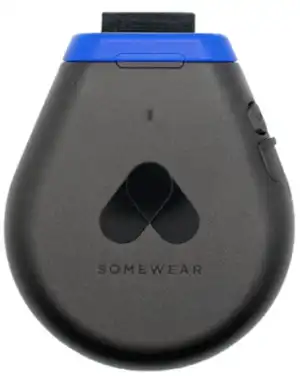 See it at Somewear Labs
See it at Somewear LabsThe Somewear Global Hotspot is a relatively expensive device but offers a cheap base plan. Requires a smartphone to access messaging features.
-
 See it at REI
See it at REIThe lightest satellite messenger available, and one of the few offering mil-spec grade durability, the Motorola Defy is a popular option for gram-counters, but poor network coverage and signal quality in tree cover is an issue. It doesn't use a standard satellite network like Globalstar or Iridium, and coverage outside of CONUS (including AK) is extremely poor or nonexistent.
Do Not Buy (Updated May 24, 2024): At this time, we can no longer recommend the ACR Bivy Stick or Somewear Global Hotspot for general backpacking use (although we acknowledge there maybe be narrow use cases for each). In addition, SPOT has never addressed the hardware (button delay) issues associated with the SPOT X and continues a years-long pattern of unresolved, poor customer support. In spite of the latter, the Spot Gen4 remains on our list because of its reliability and more modern hardware and software integration – but buyer be warned if customer support is needed. Finally, because of delays and other issues delaying the deployment of the Bullitt network, we can’t recommend the Motorola Defy right now – it’s coverage is limited to CONUS (no Alaska still) and its reception in canyons and under tree cover is extremely poor when compared to both Iridium and Globalstar. These recommendations may change as the market evolves.
Related
- Online Course: How to use the Garmin inReach
- Review: Garmin inReach Messenger | Garmin inReach Messenger Plus
- Podcast: Episode 84 | Satellite Messaging (ZOLEO)
- Podcast: Episode 68 | Unpacking the New Garmin inReach Messenger
- Skills: How to use the Garmin inReach Mini without a smartphone
- Interview: Discussing the Garmin inReach Mini 2 with Garmin Senior Product Manager Chip Noble
- Review: Garmin inReach Mini
- Commentary: Can Apple’s New iPhone 14 Replace Your Garmin inReach?
DISCLOSURE (Updated April 9, 2024)
- Product mentions in this article are made by the author with no compensation in return. In addition, Backpacking Light does not accept compensation or donated/discounted products in exchange for product mentions or placements in editorial coverage.
- Some (but not all) of the links in this review may be affiliate links. If you click on one of these links and visit one of our affiliate partners (usually a retailer site), and subsequently place an order with that retailer, we receive a commission on your entire order, which varies between 3% and 15% of the purchase price. Affiliate commissions represent less than 15% of Backpacking Light's gross revenue. More than 70% of our revenue comes from Membership Fees. So if you'd really like to support our work, don't buy gear you don't need - support our consumer advocacy work and become a Member instead.
- Learn more about affiliate commissions, influencer marketing, and our consumer advocacy work by reading our article Stop wasting money on gear.

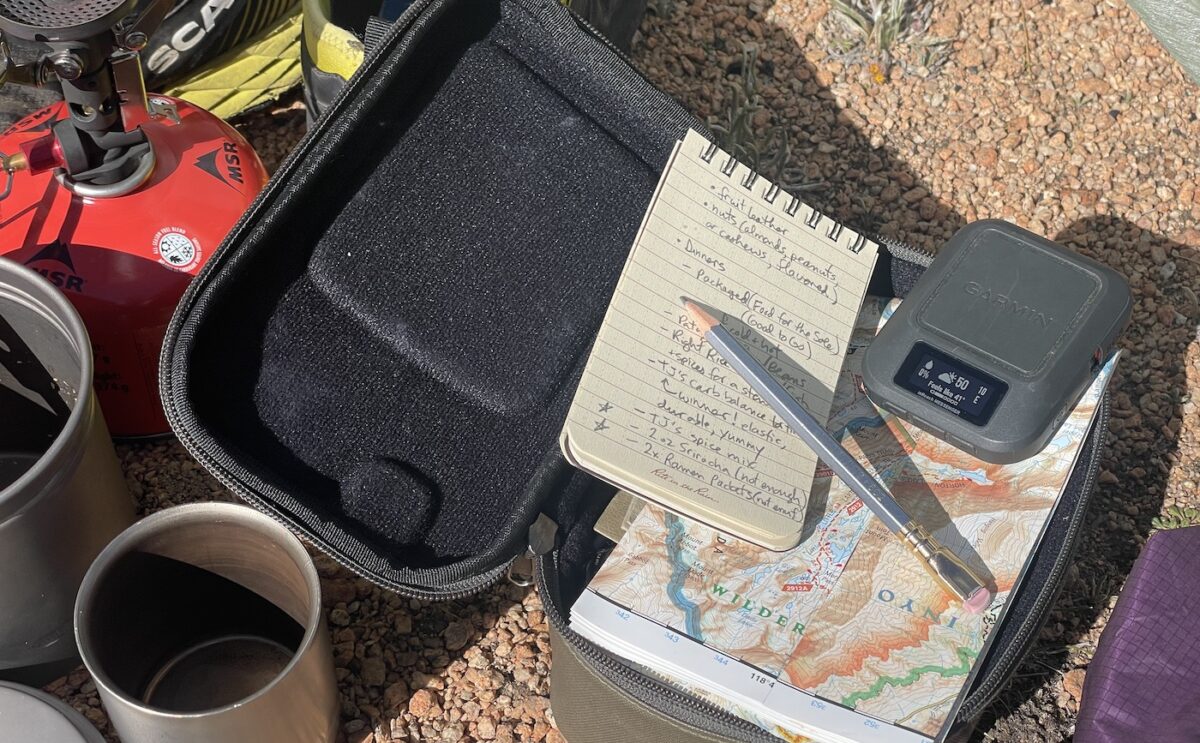


Home › Forums › Gear Guide: Satellite Messaging Devices (“Messengers”)